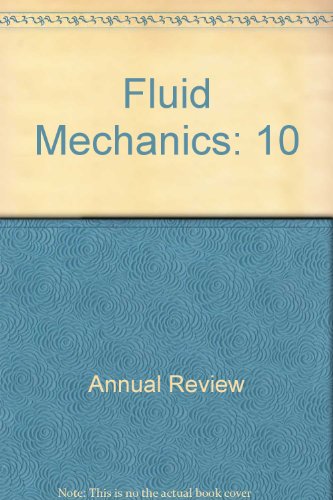Flow Mechanics in Ablative Thermal Protection Systems
IF 30.2
1区 工程技术
Q1 MECHANICS
引用次数: 0
Abstract
Ablative thermal protection systems have experienced renewed interest in the past decade owing to the retirement of NASA's Space Shuttle fleet and the US presidential mandate to develop technologies that enable humans to explore space beyond low Earth orbit. Blunt body architecture for spacecraft and the use of ablators for thermal protection systems returned as the primary choice in mission planning. This review addresses current progress in modernizing predictive tools for ablative material response. Current theory development leverages progress made in the theory of flows in porous media. This development, combined with progress in experimental techniques and high-end computing, is enabling the development of 3D macroscale models with realistic closure coefficients derived from direct numerical simulations of 3D microscale geometries of actual materials. While flight data quantifying ablative material response remain sparse, the next decade will be one of exploration in which heatshield instrumented spacecraft will provide crucial flight data for refining and validating closure models.烧蚀热保护系统中的流动力学
在过去的十年中,由于美国国家航空航天局(NASA)航天飞机机队的退役以及美国总统授权开发能够使人类探索低地球轨道以外空间的技术,烧蚀热保护系统再次受到关注。在任务规划中,航天器的钝体结构和使用烧蚀器的热防护系统重新成为首要选择。本综述介绍了目前在烧蚀材料响应预测工具现代化方面取得的进展。当前的理论发展利用了在多孔介质流动理论方面取得的进展。这一发展与实验技术和高端计算技术的进步相结合,使三维宏观模型的开发成为可能,这些模型具有现实的闭合系数,这些闭合系数来自对实际材料三维微观几何形状的直接数值模拟。虽然量化烧蚀材料响应的飞行数据仍然稀少,但未来十年将是探索的十年,在这十年中,装有热屏蔽仪器的航天器将为完善和验证闭合模型提供至关重要的飞行数据。
本文章由计算机程序翻译,如有差异,请以英文原文为准。
求助全文
约1分钟内获得全文
求助全文
来源期刊
CiteScore
54.00
自引率
0.40%
发文量
43
期刊介绍:
The Annual Review of Fluid Mechanics is a longstanding publication dating back to 1969 that explores noteworthy advancements in the field of fluid mechanics. Its comprehensive coverage includes various topics such as the historical and foundational aspects of fluid mechanics, non-newtonian fluids and rheology, both incompressible and compressible fluids, plasma flow, flow stability, multi-phase flows, heat and species transport, fluid flow control, combustion, turbulence, shock waves, and explosions.
Recently, an important development has occurred for this journal. It has transitioned from a gated access model to an open access platform through Annual Reviews' innovative Subscribe to Open program. Consequently, all articles published in the current volume are now freely accessible to the public under a Creative Commons Attribution (CC BY) license.
This new approach not only ensures broader dissemination of research in fluid mechanics but also fosters a more inclusive and collaborative scientific community.

 求助内容:
求助内容: 应助结果提醒方式:
应助结果提醒方式:


